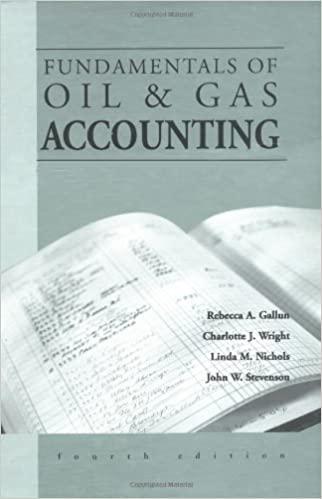Question
1. An investment is expected to produce annual cash flows of $1,600, $2,200, and $2,300. Assuming a discount rate of 10%, the present value of
1. An investment is expected to produce annual cash flows of $1,600, $2,200, and $2,300. Assuming a discount rate of 10%, the present value of this series of cash flows is _____. (Round your answer to two decimal places.)
| Period | 1 | 2 | 3 |
| 10% | 0.90909 | 0.82645 | 0.75131 |
a.$5,000.74
b.$3,579.71
c.$3,309.04
d.$3,112.70
2. Which of the following formulas is used to calculate the discounting factor for internal rate of return (IRR) when an investment produces a series of uniform cash flows?
a.Discounting Factor = Investment / Annual Cash Flow
b.Discounting Factor = (Total Annual Cash Flow + Investment) / Annual Cash Flow
c.Discounting Factor = (Total Annual Cash Flow Investment) / Annual Cash Flow
d.Discounting Factor = Annual Cash Flow / Investment
3. A company makes a $250,000 investment with net income of $96,000, $81,000, and $87,000 for the next three years. The accounting rate of return for this investment is:
a.27%.
b.17%.
c.24%.
d.35%.
4. Which of the following statements is true while making capital investment decisions for independent projects?
a.The payback period model and the accounting rate of return (ARR) model yield the same decisions for independent projects.
b.The net present value (NPV) model and the payback period model yield the same decisions for independent projects.
c.The internal rate of return (IRR) and the accounting rate of return (ARR) model yield the same decisions for independent projects.
d.The net present value (NPV) model and the internal rate of return (IRR) model yield the same decisions for independent projects.
5. Papaya Inc. intends to invest in one of two fruit juice manufacturing plants, Plant A and Plant B. The life of Plant A and Plant B models is 12 years. Plant A requires an initial investment of $920,000 and has a net annual after-tax cash inflow of $210,000. Plant B requires an initial investment of $1,500,000 and has a net annual after-tax cash inflow of $220,000. The cost of capital for the company is 12%. Which of the following opinions is true regarding the two plants? (Discount factor for i = 12%. It is 6.19437 for 12 years.) (Round your answer to two decimal places.)
a.Papaya Inc. should select Plant B because the NPV of Plant B is higher than that of Plant A.
b.Papaya Inc. should select Plant B because the NPV of Plant B is lower than that of Plant A.
c.Papaya Inc. should select Plant A because the NPV of Plant A is lower than that of Plant B.
d.Papaya Inc. should select Plant A because the NPV of Plant A is higher than that of Plant B.
Step by Step Solution
There are 3 Steps involved in it
Step: 1

Get Instant Access to Expert-Tailored Solutions
See step-by-step solutions with expert insights and AI powered tools for academic success
Step: 2

Step: 3

Ace Your Homework with AI
Get the answers you need in no time with our AI-driven, step-by-step assistance
Get Started


